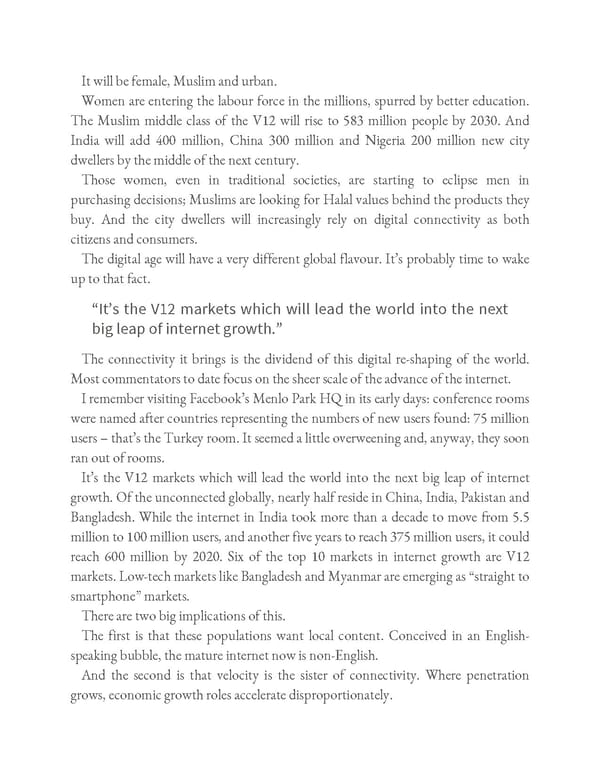It will be female, Muslim and urban. Women are entering the labour force in the millions, spurred by better education. The Muslim middle class of the V12 will rise to 583 million people by 2030. And India will add 400 million, China 300 million and Nigeria 200 million new city dwellers by the middle of the next century. Those women, even in traditional societies, are starting to eclipse men in purchasing decisions; Muslims are looking for Halal values behind the products they buy. And the city dwellers will increasingly rely on digital connectivity as both citizens and consumers. The digital age will have a very different global flavour. It’s probably time to wake up to that fact. “It’s the V12 markets which will lead the world into the next big leap of internet growth.” The connectivity it brings is the dividend of this digital re-shaping of the world. Most commentators to date focus on the sheer scale of the advance of the internet. I remember visiting Facebook’s Menlo Park HQ in its early days: conference rooms were named after countries representing the numbers of new users found: 75 million users – that’s the Turkey room. It seemed a little overweening and, anyway, they soon ran out of rooms. It’s the V12 markets which will lead the world into the next big leap of internet growth. Of the unconnected globally, nearly half reside in China, India, Pakistan and Bangladesh. While the internet in India took more than a decade to move from 5.5 million to 100 million users, and another five years to reach 375 million users, it could reach 600 million by 2020. Six of the top 10 markets in internet growth are V12 markets. Low-tech markets like Bangladesh and Myanmar are emerging as “straight to smartphone” markets. There are two big implications of this. The first is that these populations want local content. Conceived in an English- speaking bubble, the mature internet now is non-English. And the second is that velocity is the sister of connectivity. Where penetration grows, economic growth roles accelerate disproportionately.
 Ogilvy on Advertising in the Digital Age Page 437 Page 439
Ogilvy on Advertising in the Digital Age Page 437 Page 439